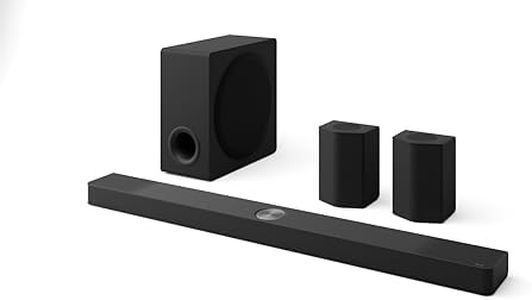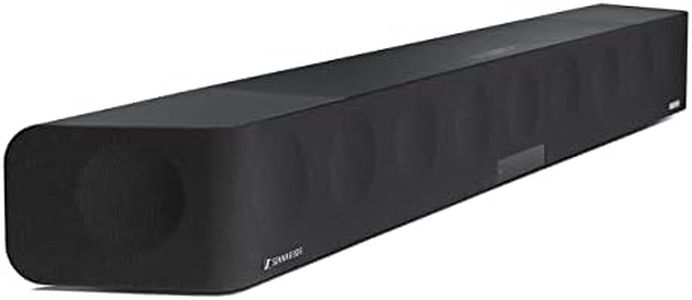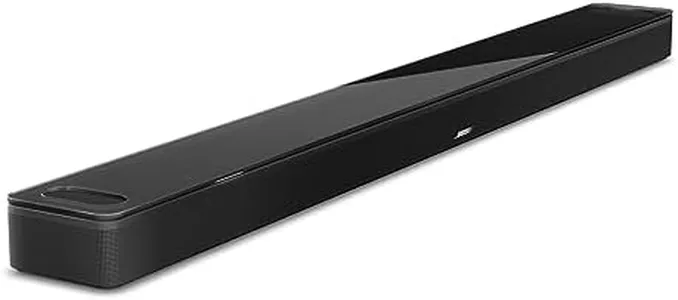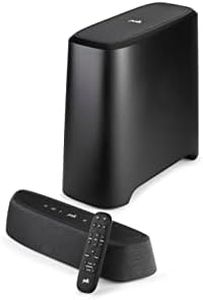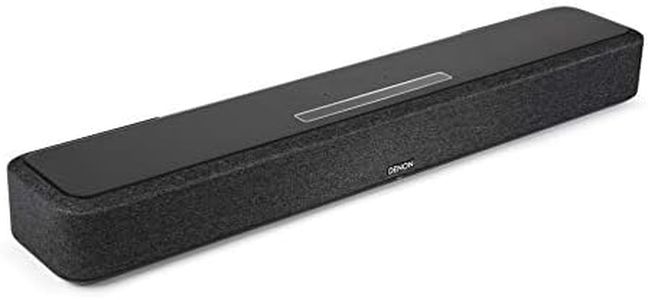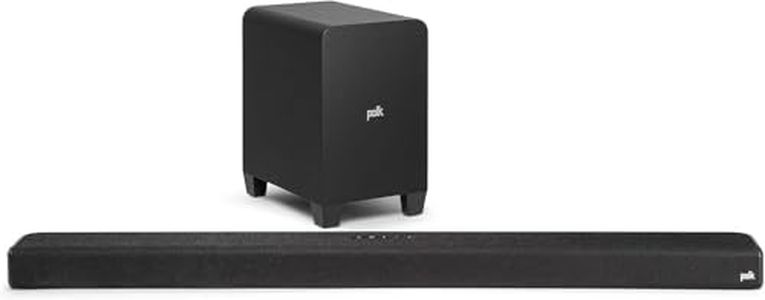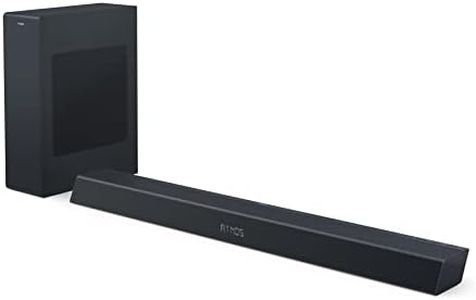We Use CookiesWe use cookies to enhance the security, performance,
functionality and for analytical and promotional activities. By continuing to browse this site you
are agreeing to our privacy policy
10 Best Soundbar Atmos
From leading brands and best sellers available on the web.Buying Guide for the Best Soundbar Atmos
Choosing a soundbar with Dolby Atmos can make a big difference in your home audio experience. Dolby Atmos soundbars are designed to create an immersive, three-dimensional sound that makes you feel like audio is coming from all around you, not just from the TV. When selecting the best soundbar, it helps to understand the key features and how they match your room size, viewing habits, and expectations for sound quality.Dolby Atmos SupportDolby Atmos is a technology that delivers more immersive audio by adding height channels, making you feel sound coming from above as well as around you. This is important if you’re seeking a theater-like experience at home. Some soundbars offer 'virtual' Atmos, creating an effect using software, while others have physical upward-firing speakers for true overhead effects. If you value a more realistic surround experience and your room has a ceiling that can reflect sound, choosing a soundbar with real upward-firing speakers is ideal. For smaller spaces or less critical listening, virtual Atmos may be enough.
Number of ChannelsChannels refer to the number of unique audio paths your soundbar can output. A typical Dolby Atmos soundbar will be labeled in a format like 3.1.2 or 5.1.4—where the first number is front channels, the second is a subwoofer, and the third is upward-firing speakers. More channels generally mean a more enveloping sound, but can also mean a larger setup. If you want the richest surround effect, look for higher numbers. For most users and average-sized rooms, a soundbar with at least '2.1.2' channels provides a solid Atmos effect, while '5.1.4' or higher suits larger rooms or audio enthusiasts.
Connectivity OptionsConnectivity refers to the ways you can hook up your soundbar to your TV and other devices, like HDMI ARC/eARC, optical, Bluetooth, or Wi-Fi. HDMI eARC is best for high-quality audio, especially Dolby Atmos, because it supports bigger audio files and more audio features. If you want to use Dolby Atmos features fully, look for HDMI eARC support on both your TV and soundbar. For convenience, check if you need wireless streaming for music or if your devices match the available ports.
Room Size and Sound ProjectionThe size of your room and how sound travels within it affects your Atmos experience. Soundbars with upward-firing speakers work best in rooms with flat ceilings and walls for sound to bounce off and create the desired effects. In a larger room, you’ll want a bigger soundbar or extra speakers to fill the space. Think about your seating area and ceiling height; low or uneven ceilings can reduce the impact of Atmos effects. If you have a compact space, smaller soundbars or those with virtual Atmos might be more practical.
Subwoofer InclusionA subwoofer provides the deep bass that gives movies and music added impact. Some soundbars include a separate wireless subwoofer, while others have built-in woofers or can be expanded with additional units. If you enjoy action movies, gaming, or bass-heavy music, look for a package that comes with a subwoofer. For users needing more discreet setups or who watch mostly shows and news, a soundbar without a subwoofer could be enough.
Size and PlacementSoundbars come in different lengths and designs, which should match your TV size and furniture. A soundbar that’s too large may not fit neatly under your TV, and one that’s too small might not give you the full directional audio effect. Measure your TV stand or mounting area to ensure a proper fit. Also consider if you want to wall-mount the soundbar—some models have kits included—especially for cleaner setups and best sound dispersion.
